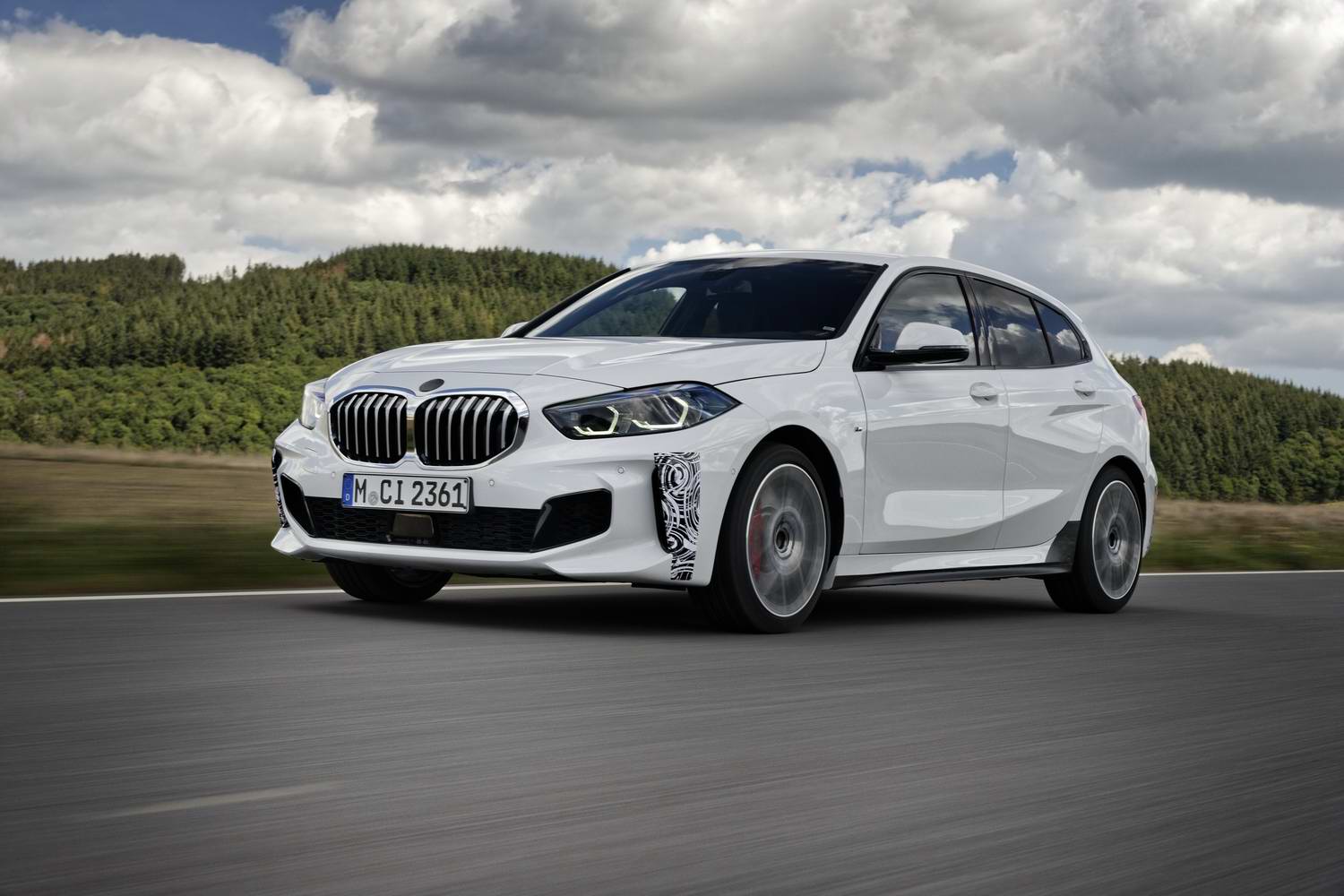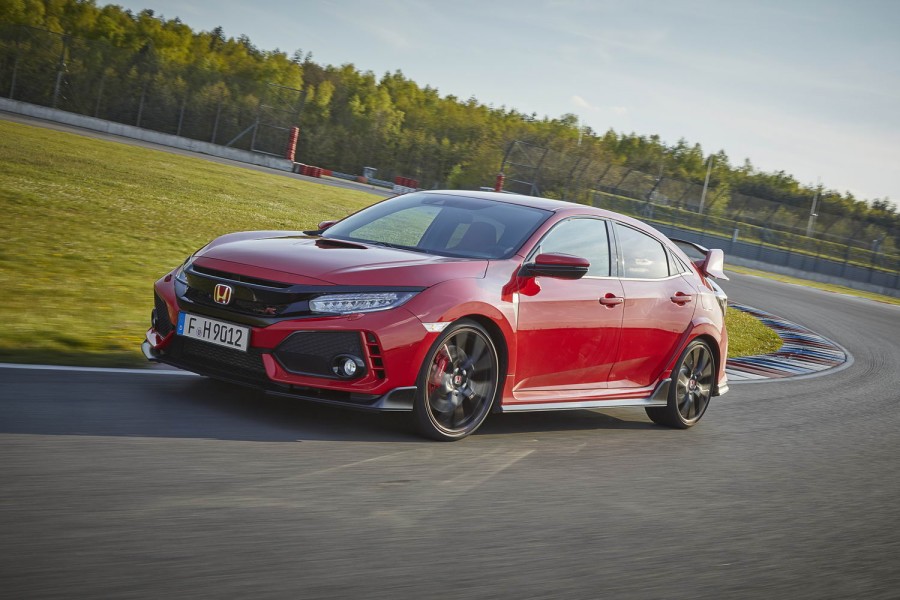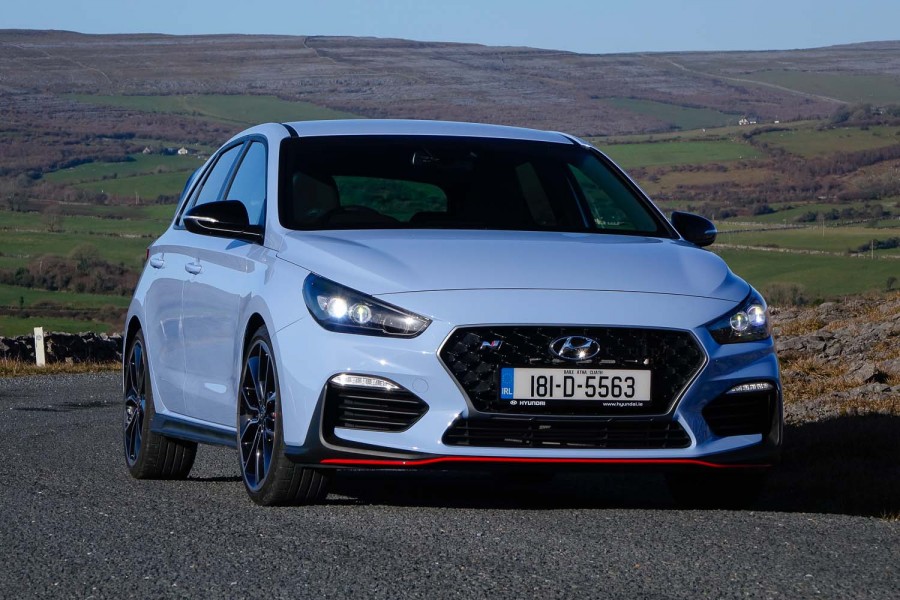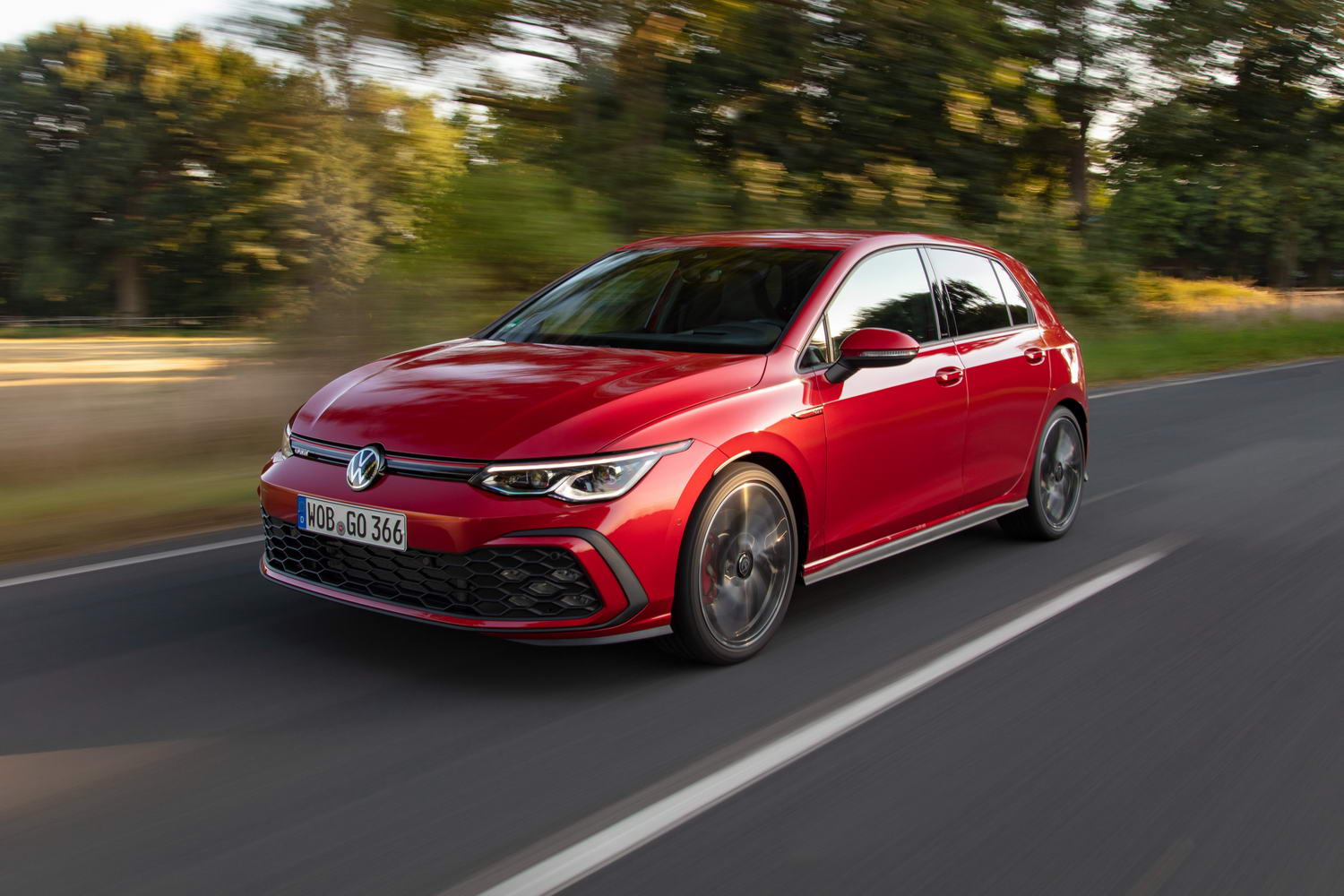The BMW 128ti marks the return of the 'Tourismo Internazionale' moniker to one of the Bavarian company's cars for the first time in almost two decades. More importantly, it's a promising sign of BMW rediscovering driving joy.
In the metal
As the BMW 128ti has yet to make its official debut, the car we're driving is wearing a light disguise, but it does seem to have some similarities to the exterior styling of the range topping M135i xDrive. Much of the interior was kept under wraps, as we drove the car with covers over the seats. However, we can confirm that they do feel comfortable and supportive. Elsewhere, the digital instrument display appears similar to that in other BMWs, alongside a touchscreen display for the infotainment. Perhaps the red stitching in the steering wheel serves as a hint as to what to expect. We'll have to wait until the car is revealed in early October to get the full picture.
But there are some things that we can see already, such as the larger brake calipers that are painted red. Our car was equipped with 18-inch alloy wheels and shod with sticky Michelin Pilot Sport 4 tyres to a BMW specification. These will be available as a no-cost option should buyers choose. A duo of real exhaust pipes adds symmetry to the rear and helps it play into Golf GTI territory. The inner section of the headlights has a black finish adding a slightly more menacing appearance to the front.
Driving it
The conception of the 128ti is an interesting one, as it was borne from a desire to get back to more "puristic" driving joy, as BMW's Senior Vice President for Driving Dynamics, Peter Langen, explained to us. It seems to have been almost something of a skunkworks project; after all, BMW already produces the 306hp M135i xDrive. But the engineers saw a gap in the range and decided to create something special: an enthusiast's car for keen drivers.
One of the first things to go was the xDrive all-wheel-drive system, immediately shaving 80kg. The car retains the eight-speed automatic gearbox and utilises a Torsen limited-slip differential for the front axle. As is usually the case with M Sport suspension, the ride height is 10mm lower than that of the standard 1 Series, but in this instance, it employs a specific setup that uses dampers and springs that are stiffer in comparison to the M135i xDrive's. The ride quality feels ideally suited to the car's nature, striking the right balance between everyday usability and the greater composure required for faster, more focused driving. As is often the case, fitting a set of overly stiff shocks doesn't necessarily mean to a sportier driving experience. BMW seems to have gotten the formula just right.
The 128ti's handling is further tweaked by a steering setup that uses a less direct steering ratio, which makes the car feel less nervous at the front end. It feels particularly good through a series of fast sweepers. This car handles very much as if it has been set up with proper driving in mind. However, it seems to work everywhere, and a clear run on an unrestricted section of autobahn showcased how impressively planted and stable the car feels at very high speeds.
That turbocharged four-cylinder engine from the M135i has been detuned to 265hp. Yet, it seems more willing and urgent than that figure suggests, especially when the Sport mode is engaged and the eight-speed automatic flings in gears with greater force. There is some sound augmentation within the cabin, but it is an order of magnitude better than the poorly synthesised soundtrack of the M135i.
But for a proper test of the car's potential, we headed on track at the Nordschleife to see just how good that chassis is. Within the first few corners it is clear that the steering is very well judged for the car, while the engine enables the car to build up speed quickly enough not to leave you wanting more. Undoubtedly a small number of purists will rue the omission of a manual gearbox option, but with tightening emissions regulations and the fact that fewer and fewer buyers request such a thing, it isn't going to happen. That said, once you keep the car in the Sport setting, the automatic is faultless.
The front-end imbues confidence and the Torsen differential allows for earlier application of power through a corner. When it all links up it can, at times, feel as if there's an invisible hand grabbing the nose of the car and pulling it around the apex. Tweaks to the software and calibration of the stability control help to make torque steer a non-event. Powering out of the rollercoaster that is the Carousel there is not so much as a blip in power delivery as the front axle gets over the hump. Going flat out along Döttinger Höhe indicates that the supposed 250km/h limiter may be a soft one and even in the upper regions of the rev range the engine continues to pull with conviction. With less weight in the car there is better stopping power, and the bite of the four-piston aluminium monobloc calipers on the 360mm brake discs up front is both sharp and reassuring. There's a good amount of modulation through the pedal too, with good feel. It might not be as quick as its more powerful all-wheel-drive relation, but the 128ti is a heck of a lot more fun to drive.
What you get for your money
We won't have pricing for the BMW 128ti until the car makes it official debut at least, but early indications are that, in Germany at least, it will undercut the M135i xDrive by around €7,000. That's a considerable saving given the small trade-off in overall performance.
Summary
The BMW 128ti lives by the 'less is more' saying. It is one of the most engaging and rewarding cars to drive that the company has brought out in recent memory. Not only can it deliver the goods on track, but it remains compliant enough to make it a perfectly realistic car to live with on a daily basis - an essential ingredient for a successful hot hatch. If this is a sign of things to come from BMW, then the future is looking good indeed.


























